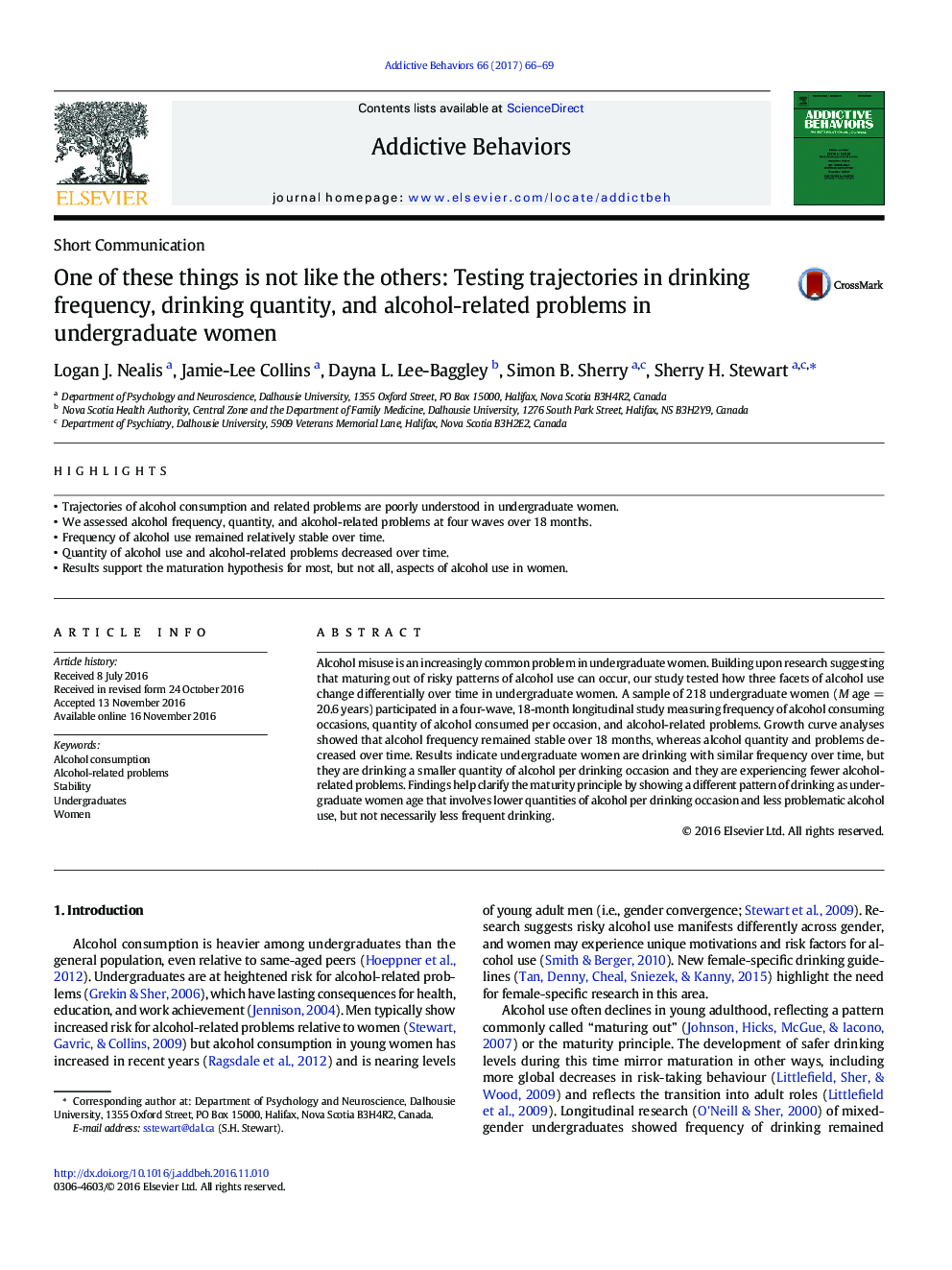| Article ID | Journal | Published Year | Pages | File Type |
|---|---|---|---|---|
| 5037873 | Addictive Behaviors | 2017 | 4 Pages |
â¢Trajectories of alcohol consumption and related problems are poorly understood in undergraduate women.â¢We assessed alcohol frequency, quantity, and alcohol-related problems at four waves over 18 months.â¢Frequency of alcohol use remained relatively stable over time.â¢Quantity of alcohol use and alcohol-related problems decreased over time.â¢Results support the maturation hypothesis for most, but not all, aspects of alcohol use in women.
Alcohol misuse is an increasingly common problem in undergraduate women. Building upon research suggesting that maturing out of risky patterns of alcohol use can occur, our study tested how three facets of alcohol use change differentially over time in undergraduate women. A sample of 218 undergraduate women (M age = 20.6 years) participated in a four-wave, 18-month longitudinal study measuring frequency of alcohol consuming occasions, quantity of alcohol consumed per occasion, and alcohol-related problems. Growth curve analyses showed that alcohol frequency remained stable over 18 months, whereas alcohol quantity and problems decreased over time. Results indicate undergraduate women are drinking with similar frequency over time, but they are drinking a smaller quantity of alcohol per drinking occasion and they are experiencing fewer alcohol-related problems. Findings help clarify the maturity principle by showing a different pattern of drinking as undergraduate women age that involves lower quantities of alcohol per drinking occasion and less problematic alcohol use, but not necessarily less frequent drinking.
